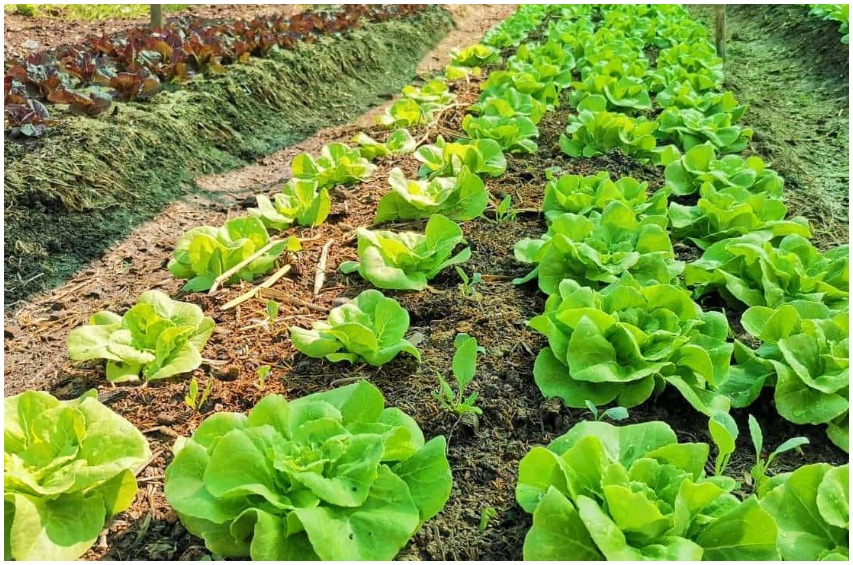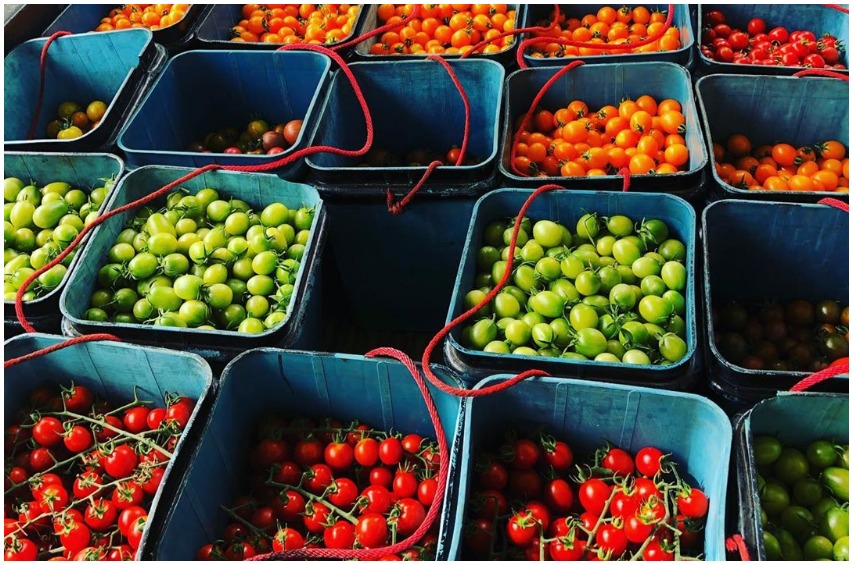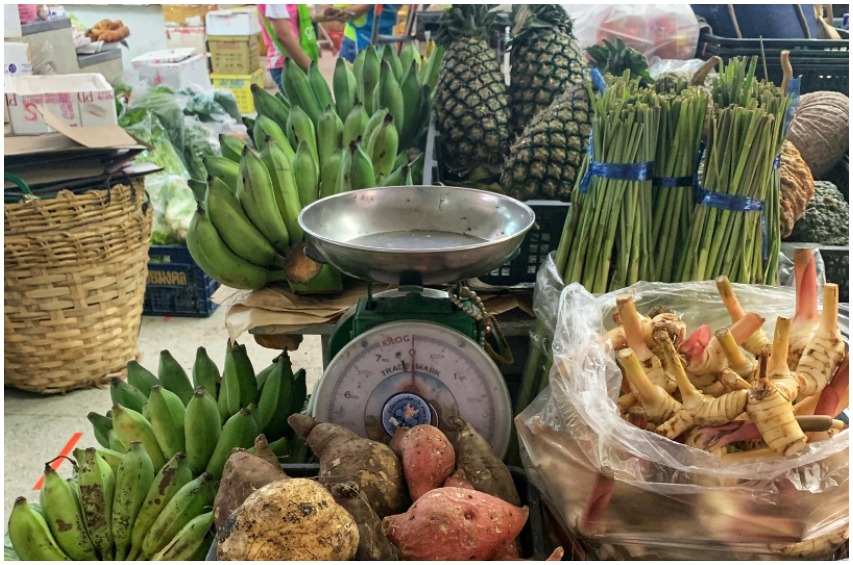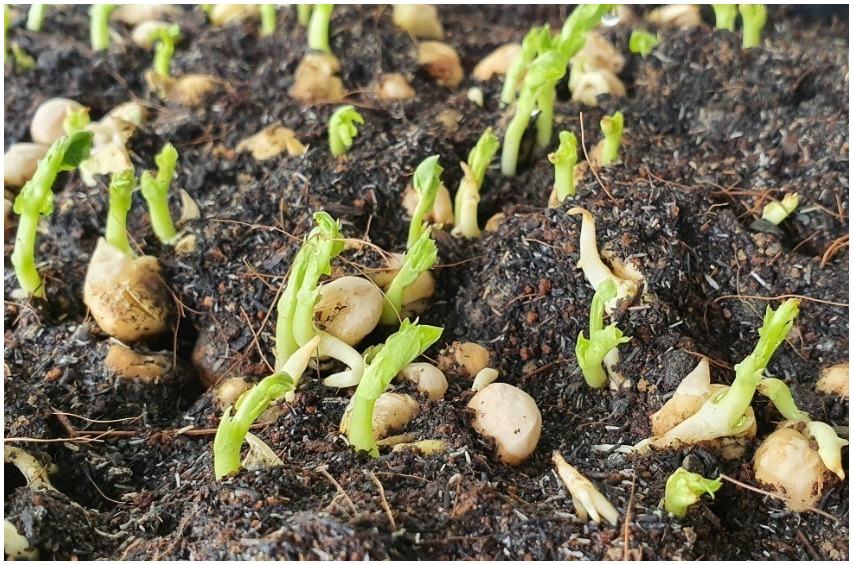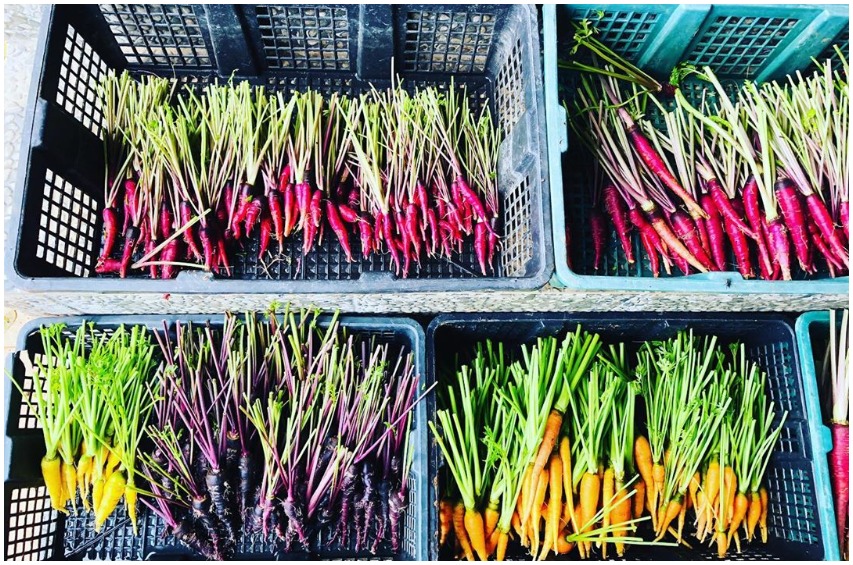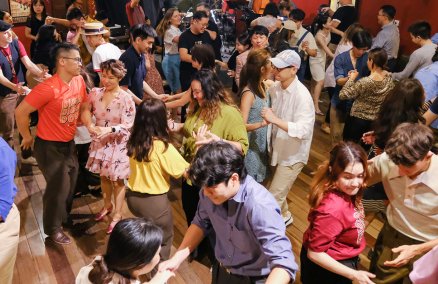Do we know where our food comes from? Do we even care? With borders closed, supply chains disrupted, and restaurants pushed to the brink because of the pandemic, we have an opportunity to examine the flaws in our food systems. Here’s where we should be looking.
Reconsidering the food supply chain
This pandemic has had a side effect that you might not have noticed. As the virus spreads and countries close borders, the systems that deliver your food have likewise gone into lockdown, exposing near-complete dependence on unhealthy choices: foreign goods and fossil fuels.
The globalized food supply chain has always been a ticking time bomb. As food systems have moved away from the latticework of local suppliers towards the efficiencies of centralized production and supermarket distribution, whole civilizations have become so detached from the basic production and shipment of food that most of us are unaware where our meals and ingredients come from, how they are being transported, or even how many hands have handled them. When the pandemic spread across the globe, the paper-thin margins in our current systems were exposed. We now see just how dependent we have become on over-specialized production, stretched supply chains and limited retail options. Let alone how the decisions our officials make affect the food we put in our mouths. In other words, we’ve had a rude awakening as to how fragile our food system is.
As The Economist
recently reported: “In 2007-08 bad harvests and higher energy costs pushed up food prices. This led governments to panic about shortages and ban exports, causing more anxiety and even loftier prices. The result was a wave of riots and distress in the emerging world… The system is far from perfect: as incomes collapse, more people are going hungry. There are risks, from labor shortages to bad harvests.”
If you Google “cost of bread” and “revolution,” you’ll see we’re almost always walking the razor’s edge when it comes to food security. That’s what makes it so devastating to see images of farmers dumping milk and killing off livestock when they can’t transport their products or demand from restaurants drops to zero. Especially when you put those images side by side with lines of the homeless and hungry waiting for food at soup kitchens. In Bangkok, accessibility to good, healthy food has often been unsteady, especially for manual laborers and migrant workers who live hand-to-mouth in the best of times. Fortunately, community-minded people in the city have stepped up to offer a small fix to alleviate some of these issues.
Thai City Farm, a project at Thailand’s Sustainable Agriculture Foundation, oversees over 450 community projects teaching urban farming for those who can’t access food, especially during crises. Migrant workers now have a safe haven to grow and pick their own pesticide-free vegetables. The project also makes them stakeholders in a more sustainable food system.
The folks at
Raitong Organics have long pioneered partnerships with local organic farmers and promoted organic and natural farming methods to customers. These projects, they say, improve the well-being and dignity of Thai farmers that are offering nutritious food to consumers.
And then there’s Daniel Bucher: chef, cook, maker of food. He is also a farmer, a leader in sustainability, a globally renowned expert on food waste. Not to mention his day job as executive senior sous chef at the Marriott Marquis Queen’s Park hotel and side hustles as food waste ambassador for the
Scholars of Sustenance foundation (SOS) and lead chef in the UN food waste campaign Think.Eat.Save. Under his watch, the hotel has reduced electricity consumption by 9.4 percent, water usage by 5.03 percent, and paper waste by 4.9 percent year-on-year. Now he is exploring opportunities to take sustainability even further. His current projects include an urban vertical farm, urban beekeeping, a sustainable fishery project and a waste management initiative. In his role as food waste ambassador, he advises on food sustainability, develops programs, suggests structural improvements, takes official speaking assignments and represents Thailand internationally as a sustainable business destination.
It’s time to care about Thai products
“For better or worse, much of our food system revolves around what we’re able to export and demand created by travelers visiting Thailand,” says Dwight Turner, food writer, Bangkok Fatty blogger and founder of non-profit
The Courageous Kitchen. “The pandemic has basically shattered demand.”
When demand drops, Turner notes, it affects everyone from mangosteen farmers in the south to butchers in Bangkok. “Little government support means those at the bottom of the supply chain suffer most. The result has been farmers with a glut of produce that can neither be exported nor sold locally. When those items have a short shelf life, farmers, for example, see their fruit rotting in orchards or warehouses [because they] can’t be sold in time. The magnitude of this isn’t something we are forced to confront in the city but is something we should all be better informed about,” he says.
The problem we are facing now is not only our flawed food system, but also the seismic disruption to the hospitality industry. While a small percentage of establishments won’t feel a severe impact, many hotels and restaurants that cater to tourists will suffer until the country reopens to international visitors. That puts the onus on those of us in Thailand to support local farmers, butchers, vendors and restaurants to prop up the sustainable systems we have started to build again.
“Thailand is blessed with an abundance of food, but we don’t always appreciate the variety and diversity available,” says Turner. “We need to both incorporate more types of locally grown nutritious produce into our menus and spend time exploring beyond the popular varieties of a given item—for example, less well-known varieties of mango.”
He continues, “There are also products which we consider central to Thailand’s culinary identity, like chili and garlic, that are imported because Thai farmers can’t compete with the low prices from other countries in the region. We should do more to appreciate these ingredients and protect the farmers who grow them.”
Soontorn “Keow” Ruttanasook, owner of
Green Garden, admits that the business nosedived almost overnight when the pandemic started to spread in Thailand. “Most of our clients are chefs and restaurants, so when the lockdown happened [in March], we lost all our clients. But we kept growing, kept hiring and we waited. After about a month without an order, we decided to change our target to personal usage by delivering CSA boxes door-to-door.”
The efforts that Turner and Keow refer to have another positive effect on our ecosystem: that it’s good for our ecosystem. According to a study published in Science, the global food supply chain emits 13.7 billion metric tons of carbon dioxide equivalents each year. Not surprisingly, most of that comes from beef and other animal products, like cheese, lamb and mutton, milk cows and even chocolate. By eating local, we can support good practices across the board.
Chemicals, politics and tough choices
In a paradox, we often eat healthier nowadays, but at the same time we don’t. Those veggies that say organic at the supermarket: are they really organic? Do we know for sure? Do we know which farm they came from? Industrial foods have been modified, processed and changed for mass distribution to meet the demands of consumers who are looking for cheap food, as well as manufacturers who need to lower costs as margins get pinched.
According to Organic Agriculture Development Thailand and Earth Net Foundation, just 0.3 percent of Thailand’s agricultural land is certified as organic, compared to 1 percent worldwide. Less than 0.2 percent of Thai farmers practice organic agriculture, too. Interestingly enough, 58 percent of the organic goods sold in Thai supermarkets are imported.
While Green Garden has managed to leverage connections throughout the country to stay afloat by selling some of the small percentage of organic goods that are grown in Thailand, not everyone is so well-positioned. Countless suppliers, farmers, restaurants and chefs are suffering, as the high price of organic ingredients has become harder to justify in a tanking economy. Facing off against cheap, mass-produced goods from large farm corporations, organic and sustainably produced ingredients often lose their appeal.
It is precisely this industrial food system that has come to dominate in Thailand. With few exceptions, like the Or Tor Kor market, most wet markets get their ingredients from Talat Thai, one of the largest sources for fruits and vegetables in the country. While there is little available literature on the subject, most of this produce is thought to be grown with pesticides and monocultured, both of which keep prices low. According to a 2017 report by the non-profit
Thailand Pesticide Alert Network (Thai-PAN), over 60 percent of popular Thai fruits and vegetables sold at supermarkets and wet markets were unsafe to eat, because they were laced with pesticides like paraquat and glysophate, the latter a common weed killer.
Two years later, in 2019, Thai-PAN found that 41 percent of 15 other popular vegetables and nine kinds of Thai fruit contained toxic chemical residues above the accepted level for safety. Three out of six samples even received the “Organic Thailand” label provided by the Department of Agriculture. With up to 65 percent of Thailand’s workforce laboring in agriculture, according to the
WHO, many of whom work in export-focused agriculture, that figure is alarming. It means Thai farmers have been using potent, toxic chemicals to meet demands for their products.
In June, after a protracted debate involving farmers, politicians and US special interest groups, Thailand enforced a ban on two agricultural chemicals widely regarded as toxic to humans: paraquat and chlorpyrifos. The lingering dilemma is that as many as 10 million farming households in Thailand used paraquat to protect their crops, as there is no other alternative on the market,
according to Reuters.
A step toward sustainability or a devastating blow to farmers? Consumers, unfortunately, have often been left out of this discussion. To make matters more complicated, farmers in Thailand now face the looming prospect of a trade agreement that could upend their industry.
Thailand is in talks to join the CPTPP (Comprehensive and Progressive Agreement for Trans-Pacific Partnership), a free trade agreement between 11 countries. While the deal is meant to boost international trade, it could have a devastating impact on farmers. If the deal is passed, farmers will lose their rights to the certain seeds that were registered overseas for protection under the CPTPP. In other words, unless they pay royalties for their seeds, they will face fines and, potentially, arrest for simply farming as they have for years, if not decades.
The potential fallout has influenced Thai political leaders’ decision-making. The country is still studying the agreement and deciding whether to sign on, making it increasingly likely that—for better or worse—Thailand will miss a window to enter the pact in 2020.
“Hopefully, issues surrounding food hygiene and the task of cooking at home have all made us more conscious of the need for food transparency during this pandemic. There have been some encouraging local movements like the pushback against joining CPTPP during the pandemic that I hope we can harness into creating more trust in our food systems,” says Turner.
The ripple effect on the economy is clear. If consumers don’t put a premium on quality ingredients, it won’t translate into revenues for restaurants, which then impacts farms, and ultimately affects the jobs and livelihoods of the country’s 10 million farming households.
Rebuilding the local food system from the ground up, ensuring food security for future generations and creating better opportunities for suppliers, requires conscious effort. Many in Bangkok’s food and beverage industry are already driving this change in their own ways.
“We need a lot more learning activities and campaigns, and we need to reach out through the media to food activists on how to work together to create a learning-based society. When our food system is in the control of very few industrialized companies, our choices become increasingly limited, despite us being offered the illusion of choice,” says Kingkorn Narintarakul Na Ayudhya of the
BioThai Foundation and
Food4change.
She says we can maintain and even advance the diversity of our food by supporting local farmers and supporting small-scale vendors. “Our campaign, Food4change, always urges people to go to local fresh markets and learn, directly from the farmers, how they produce [their goods] or how to cook with a local ingredient they are unsure of.”
This is precisely what has fueled the sea change in the city’s fine dining scene. Some of Bangkok’s best chefs have gone out of their way to learn the tricks of the trade, and along the way they have acquired a greater measure of pride in local traditions and emphasized the protection of the local ecological system while helping to bolster the local economy.
Taan,
80/20,
Canvas,
Samrub for Thai,
100 Mahaseth,
Le Du,
Baan Tepa, Axis—top restaurants with passionate people at the reins have increasingly put local ingredients in the spotlight.
Paolo Vitalleti, chef and owner of
Giglio and
Appia, has jumped on the local train by switching to wagyu provided by ranchers in Khon Kaen. “Of course, we will always have some special products coming in, but we will mostly work with local ingredients for meat, vegetables and fish, and it is not a decision based on price—it’s the same or more than [the price of] imported goods,” he says. “We have made a definitive change. Local beef is of extremely good quality.”
Not just extremely good: Vitalleti believes Jasmine and Black Angus beef he procures from breeders in Khon Kaen equal their Australian counterparts.
“The high-end market quality is quite superior on the same price level, and you have the advantage [of being able] to visit the farms and check standards of production to improve the quality. The Australian beef that has a monopoly on the Thai market comes from intensive breeding and, honestly, it is not what we want,” he says.
“It’s our job to educate our guests,” says Riley Sanders, chef of Canvas, the Michelin-starred restaurant in Thonglor known for its exceptional use of rare, seasonal and premium products sourced from across Thailand. “Many times, people don’t know what some things are, or they don’t remember what they are, and this is usually for the most common ingredients [we use].”
We also live in a world full of influencers, who jump from food trend to food trend. Many believe that these social media darlings must use their platform to educate their millions of fans about local food culture and the people behind it rather than pose for photographs or write columns about how weird and laborious Thai fruit is.
“The most important thing is to get people to learn where their food comes from, how it’s produced. When they do this, they learn who is involved in the supply chain, and they become more aware about the environment. This makes the supply chain more transparent,” says Kingkorn.
“When you go shopping, shop like you’re looking for a story,” says Bangkok-based chef Luke Farrell, who scours Southeast Asia for ingredients and grows them at his greenhouse in Dorset, England. “You want to know how this ingredient got to you, where it comes from and how it got to your hands. Are they in accordance with your ideals and beliefs? There is something much more valuable and much more exciting and healthier [when] you know where your food comes from. It makes a meal zing and become full of life rather than being just empty and flat.”
We all perceive food in different ways. In Bangkok, food is often a status symbol—a latte from a Hong Kong-born cafe chain, wobbly pancakes from a Japanese dessert specialist, French foie gras and New Zealand wagyu, all captured on social media, establishing one’s place in the in-crowd. For most of the population, however, social media matters less than survival.
In this city and country, food is everywhere, accessible and cheap. But with the changes that we’re now experiencing likely to stick in the long term, many consumers are searching for a healthier lifestyle, and many want to learn more about the origins of their food. As food industry experts have told us, now is the time to join the movement, embrace the incredibly high quality of products grown and raised in this country, and be better to the planet and the hard-working people across the local supply chain.










